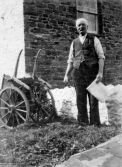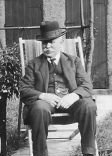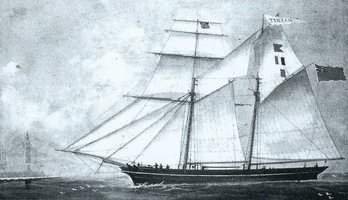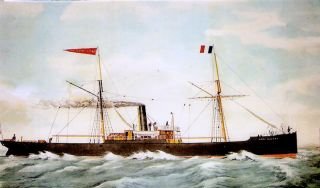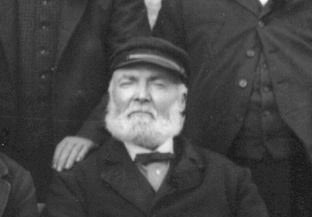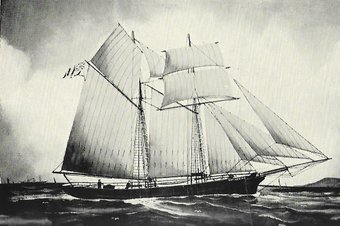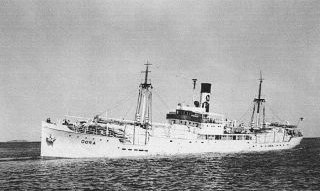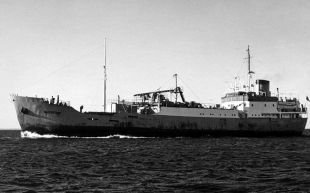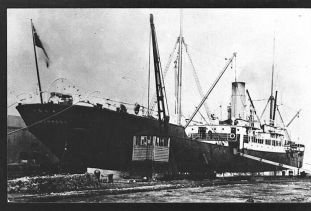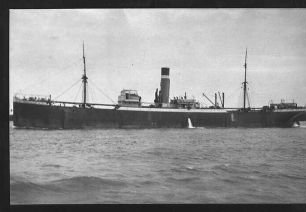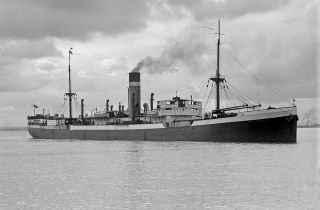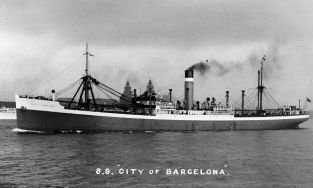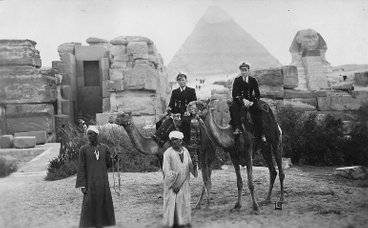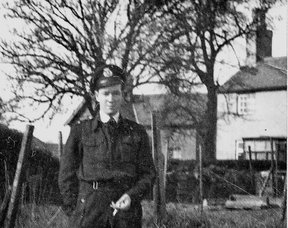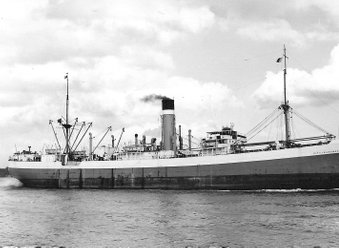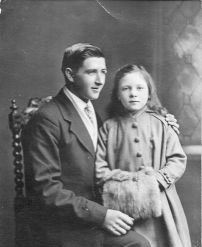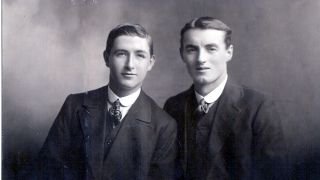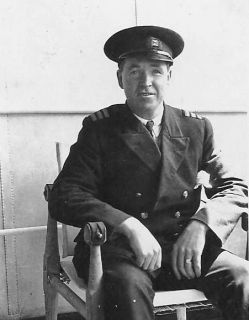DAVIES MARINERS GLOUCESTER HOUSE AND BALMORAL COTTAGE
DAVID DAVIES b.1858 CAPTAIN THOMAS DAVIES b.1857
This particular clan of Davies mariners became intertwined with those of the Richards family of Tangoitan and Pengoitan House. For claritys sake we will begin with the Richards family which stretched back to the 1700's. Thomas Richards a mariner born in 1798, married another villager Elizabeth Lewis b. 1796, in 1822. They had 10 children, of whom 4 were boys. Three became master mariners, Thomas 1822-90 David 1835-66 and John 1827-1903.
Thomas b. 1822 was a ships boy at fourteen on sloops Amity and then the Eleanor and Betsy and the Robust. He served as an ordinary seaman on the John & Anne, Hope, Victoria, Mystery and the Pacific. At twenty two years of age he was mate on the Aberystwyth vessels Jane and Catherine, Speculation, Aquila, Truant and Credo. At twenty eight he became Master and commanded the Tirsah and the steamer Lady Mostyn. He named a daughter after his first command; she was Tirsah Richards 1859-97. Thomas married Mary Davies of Taliesin and they raised a family of six children. All girls except for David John Richards who became a mariner.
TIRSA LADY MOSTYN
David b.1835, was at sea at fourteen and served on the Claudia, Hopewell, Ann Elizabeth, Credo and Eugenia. He was a bosun on the Elizabeth and the Clarissa at twenty one. David quickly climbed to the position of mate on the Clarissa, Jane Sophia and the Ceres. By his thirtieth birthday had passed as master and took command of the Edward John. Unfortunately his career ended with his untimely death at thirty one years of age
John b.1827, was master of the schooner Catherine for over a decade and later in life was second or third officer on steamers such as the Feliciana. He is seen in the group photograph of Borth Master Mariners and also as a crew member of the Feliciana. He lost his first wife Eliza 1827-1872, with whom he had four children, who all predeceased him. Elizabeth died in 1861, Margaret in 1863, Thomas in 1887 and David in 1870. There is a terse sentence in the family bible that states "David Richards son lost on the Kish Bank whilst a crewmember of the Conductor". This navigational hazard near Dublin has claimed many ships over the years . John took a second wife, Margaret Davies in 1874 but there were no children from this union.
CAPTAIN JOHN RICHARDS CATHERINE
Of Thomas and Elizabeth Richards’ other children, Eliza b.1824, Edward b.1825, Anne b.1829, Margaret b.1831 and Mary b.1843, nothing is currently known except for Elizabeth and Margaret. Elizabeth married David Lewis late in her life and had no issue, she lived in Balmoral, or Pengoitan House as it was known in 1870, where she kept an eye on her sister Margaret’s family. Margaret had married John Davies at Llanbadarn and lived there for a while before returning to Borth where they had three sons, John b.1855, Thomas b.1857 and David b.1858. Thomas and David were both at sea by the age of twelve. Thomas lived at many deep sea ports around Britain but Gloucester House was still his Borth home. This also became a residence for his sons, so the family must have owned it for quite a time renting it out when not residing in Borth. The Rees and Ellis mariners lived there at various times during Thomas’s ownership.
Thomas 1857-1930, known as Captain Davies the Elder of Gloucester House, began his career as a ships boy on the schooner Tirsah under the watchful eye of his Uncle Captain Thomas Richards. He was also on the schooners Rosina and the Squirrel in the same capacity. His next vessels were the brigs Cambrian Belle and Xanthus as an ordinary seaman. He was an able seaman on the Edith, Catherine, Lady Pryse, Maria, Volunteer, Sabrina, Hagar and Courier, all schooners except for the brig Courier and the brigantine Lady Pryse. Thomas then moved to steamships as an A.B. on the Lady Mostyn, Nant Francon, G.W. Jones and the Jersey. Oddly he is listed as master of the schooner Catherine some ten years before he passed his masters examination, as well as being noted as chief steward on the Nant Francon in 1883. His brief captaincy of the Catherine came about because his uncle, John Richards b.1827, was its master. There are several instances of this type of situation at Borth when a young competant relative is allowed to take command for a short while as it was good training for a prospective master mariner. In 1889 whilst again on the Nant Francon Thomas was issued with his first mates certificate. This steamship had a long association with Borth as the 1891 census reveals, that of the eleven crew seven were from Borth...master John Jenkins, Evan Davies mate, John Davies bosun, John Jenkins, cook and steward, with John Morris John Richards and Richard Davies all A.B.’s. Thomas served as first mate on the steamships, Dowlais, Dora, Gwalia, Clieveden, Sir G. Wolsey, W.J. Radcliffe, Marie Fleur, Eldorado and after gaining his masters certificate he commanded the Mary Hough, Maggie Hough, Samuel Hough, Consols, Globe, Avanti and the L.H. Carl. The Hough shipping company was formed by Borth resident Nancy Birch’s antecedents. The L.H. Carl, under the command of Thomas Davies was torpedoed on 20th July 1917 in Lyme Regis Bay with the loss of two crew members. He was sixty one years old at the time and other events including the death of one of his sons a year later saw him retire from seafaring. Captain Thomas Davies had married Mary Anne Lougher of Llancarfan, Glamorganshire in 1881 and between them had six children. Two of the three boys went to sea. Mary Anne died in 1904 and two years later Thomas married Anne Davies of Penrhyncoch with whom he had one daughter Muriel b.1909.
DORA CLIEVEDEN
The first born boy of Thomas and Mary, Thomas Richard Davies b.1888, known as Captain Davies the Younger of Gloucester House, had a long and illustrious career. Again like his father he lived at various ports but kept a residence at Borth, Gloucester House.. We pick up his career in 1910 when he was second mate on the Annie Hough. In that capacity he also sailed on the Mary Hough, Samuel Hough, Yola, Netherby Hall, Worsley Hall, City of Rangoon and the City of Durham. The Davies mariners had a long association with the Hough lines aided by Captain Rees of Arequipa House, who spent his whole career with that company and was instrumental in securing them positions at the beginning of their careers. From 1917 up until the Second World War Captain Davies was master of the City of Florence, City of Johannesburg, City of Barcelona, City of Newcastle and the City of Sydney
YOLA CITY OF DURHAM
CITY OF FLORENCE CITY OF BARCELONA
The other seafaring son of Thomas and Mary, Basil Lougher Davies 1897-1918, brother of Captain Davies the Younger, lost his life at twenty years of age when the S.S. Penvean was torpedoed by U.105. Amongst the twenty two dead were other Borth mariners, Hugh James, son of Captain James Scranton House and Morgan Morgans son of David and Mary of Gogerddan House Ynyslas.
One of Captain Davies the Younger's sons, Howard Glyn Davies b.1923, followed in his forefathers seafaring footsteps. In February 1942 the 19 year old joined the Ellerman Line vessel City of Eastbourne as a cadet officer. He went on three trans world voyages on this vessel, followed by a single one on the City of Barcelona. The next five world voyages were on the City of Chester . Howard was promoted to third mate with his duties being primarily navigation. In this capacity he sailed on City of Windsor, City of Lincoln, Samtweed, City of Kimberley and the City of Leicester. By 1947 third officer Howard Glyn Davies was ashore and did not return to sea. Tracing his travels reveals that he circumnavigated the globe many times, passing through the Suez and Panama canals on numerous occasions visiting ports in the Mediterranean, the Persian Gulf, East and South Africa, India, Sri Lanka, Australia, New Zealand and even the now notorious Guantanamo Bay. In Madagascar one of his ships ran aground and they had quite a job getting her afloat again, and I hastily add that this was before he took up his navigation duties. The last ports prior to returning to the U.K. were Cuba, New York and then across the Atlantic to either Hull, Liverpool, London, Barry or Cardiff. Howard got through the war unscathed and was awarded the 1939-45 Star, Atlantic Star and the Pacific Star. It is noticable that in his five years at sea he probably visited more ports and countries than either his father or grandfather had. He worked for Cammell Laird and then joined the Milk Marketing Board as, of all things, an artificial inseminator, known colloquially as The Bull in the Bowler. His brother Basil, named in memory of his uncle who was lost on the S.S. Penvean , probably influenced his employment choice as he was a milk tester for the M.M.B. Howard then moved to Davies Antwiss Animal Food Suppliers and from there he became licensee of the White Lion in Nercwys, near Mold.
HOWARD GLYN DAVIES
CITY OF EASTBOURNE
BASIL LOUGHER DAVIES AND SISTER MURIEL
David Davies b.1858 met and married a London girl Mary Ann Arnold. Her family had a flourishing painting and decorating business and researcher John Ellis discovwered that they were of Irish descent settling first in Kent before moving to London. Sadly after giving birth in 1890 Mary died of T.B. and David, now a widower, organised for a wet nurse to bring back baby Arnold to Borth. the wet nurse was a relative of Mary Morgans who lived nearby at Borth with her builder husband Jess. It was David's aunt who looked after David and his son up until her death in 1915. she provided a female presence in a household that was occupied by two mariners whose paths seldom crossed because of the nature of seafaring.
David's son Arnold ran away to sea at fifteen years of age before finishing an apprenticeship as a blacksmith at Dolybont. This apprenticeship had been organised by his Auntie Elizabeth’s husband David, a native of Dolybont. His first vessels were the Prince Lines commanded by Captain John Davies Glendower House,b 1872...whether he was a relative is uncertain. Arnold was to spend the next thirty six years at sea. His name appears on crew lists of various vessels with Borth connections such as the Ethel Radcliffe commanded by Captain Richard Jones Miramar House, voyaging to India and the far east. In March 1916 he was on the S.S. Lady Carrington which was sunk by U.49. Captain Davies of Neptune House, was in command and all the crew, that included John Davies of Trigfan and Rowland Ellis of Carron House, were safely landed in Brest, France. At the end of the same year Arnold was again a victim of a torpedoing; this time by U.32 off Cape St Vincent whilst on the Marquis Bacquehem. This vessel was returning from India with a cargo of manganese ore vital to the war effort. Arnold, my grandfather, described the sinking thus.
“I had just come off watch and was sitting down to breakfast when there was a terrific bang and I got covered in very hot porridge. I knew at once what it was because it had already happened to me seven months earlier. When we took to the lifeboats the first mate, a Yorkshire man and myself were joined by twenty two Lascars who spoke no English. The next thing we saw was the submarine surfacing, a very sinister and frightening sight, and I thought we were going to be machine gunned; but instead the German captain, in good English, stated that he would be back the next morning to pick us up. That did not happen and we were adrift in the lifeboat for days waiting for a favourable breeze to move us towards land. The mate had a handkerchief that he cut in to twenty-four squares, one for each of us, which once a day we dipped into the only bucket of fresh water in the lifeboat. This was a precautionary rationing method as we did not know how many days we would be adrift with that small amount of water. Thank God for the first mate’s navigational skills and eventually with a favourable breeze after drifting for days, we sailed for two days and landed in Portugal, in only our underwear I may add, where we were given water and figs. My two sinking’s were one thing, but the drowning of my cousin Basil in the last year of the war really shook me. There were of course other deaths because of that war which affected many Borth families”.
COUSINS BASIL AND ARNOLD DAVIES
Like many other arrangements in Borth, Arnold often sailed with Captain Williams Francon House, who lived nearby. He was frequently joined by other near neighbours Will Jones of Troedyrhiw and Johnny Brodigan, Hillside Cottages. These voyages during World War One were to Argentina for beef and horses for the troops on the Western Front. Arnold was an A.B. and occasionally a bosun on the Tintoretto, Sautate, Kenilworth. During the 1930's he served as quartermaster on Hall Line vessels commanded by his cousin Captain Thomas Richard Davies of Gloucester House. He spent the first three years of the Second World War on the Atlantic convoys, however towards the end of 1942, as letters home made clear, he was convinced that his luck was going to run out. This coupled with a very narrow escape on a voyage to Russia, and constant reminders of his long drowned nephew Basil’s fate, saw him volunteer to work in a munitions factory in the Midlands for the last two years of the war; very much jumping from the frying pan into the fire. As an only child and his father David remaining a widower, he was very close to Basil as many photographs of them together attest to.
CAPTAIN THOMAS RICHARD DAVIES
The narrow escape previously mentioned was when he was on a convoy to Russia. The ship he was on was taking a battering in heavy seas which resulted in the ships ladder becoming dangerously loose. The captain asked for volunteers to secure the increasingly dangerous and damaging equipment. Arnold decided he would be one of the volunteers. He crawled out to the end of the ladder which was now damaging itself and the sides of the vessel. The ship hove to and the crew were put on standby. After making his way to the far end of the ladder and securing a line, he was half way back when the ship gave a massive lurch and he was flung into the sea hitting his head in the process. The crew had already thrown out several lifebelts, one of which he managed to grab. He said that the water, although dangerously cold, bought him out of his concussion. He was left with a very large scar on his forehead. He knew he was incredibly lucky to have survived and spent the next few days swathed in blankets in the captain’s bunk eating hot porridge and consuming welcome shots of brandy. He often talked about the travails of a seafarer in the Great Depression when he had to hitch-hike down to Barry and other South Wales ports hoping to get a berth. He slept in barns and walked most of the way as lifts were few on the much less trafficked roads of those days.
Arnold worked on the sea defences at the northern end of Borth in the 1950’s and retired as he was approaching seventy. For a time up to, and after the Second World War he was the unofficial lifeboat at the southern end of Borth rescuing many people before the R.N.L.I. was established in the village. He was amongst the last of that generation of Borth mariners who had been at sea throughout two World Wars and the Great Depression, which somehow had marked them all.
I am indebted to relative Paul Davies, retired Police Superintendent, a direct descendant of the Davies captains of Gloucester House for the many photographs in this segment, as well as to John Ellis who did a large amount of the family research.
